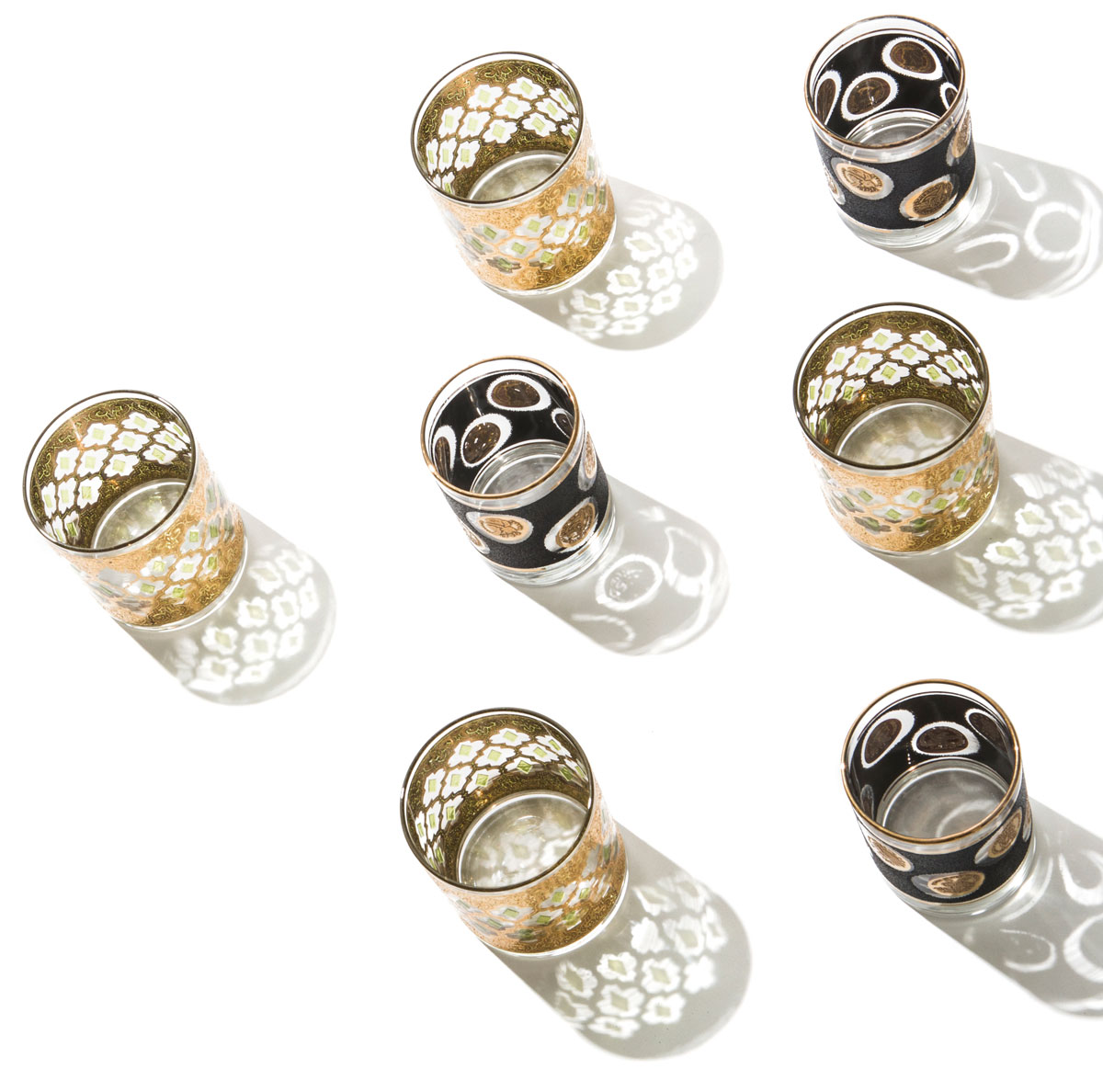
Photograph by Ryan Hayslip
There’s almost nothing merrier than sipping a holiday cocktail from a gold-embellished glass. Whether it’s a sparkling rim on a champagne flute or an ornate filigree on a tumbler, this style adds a touch of jubilance to any fete.
- Gilded glassware is often associated with midcentury design, but the process of decorating glass with gold dates back at least to ancient Egypt and Rome. Tutankhamun’s headrest was crafted of blue glass with gold sheeting.
- Gold leaf, paint, or powder is applied using various techniques including heat rolling, and motifs are also sometimes enameled or engraved. Designs range from simple edging to elaborate arabesque patterns, animals, and kitschy scenes.
- In the postwar period, gilded glassware surged in popularity. Common modern manufacturers include Libbey, Culver, and Georges Briard, who designed a whimsical signature line for Neiman Marcus and Bonwit Teller. Some vintage pieces bear a mark on the bottom, but many are unlabeled and unsigned.
- Founded in Brooklyn in the 1930s, Culver devised its own method of gilding. It involves heating and rolling 22-karat gold in intricate patterns, but the exact process remains a trade secret.
- The rarest and most sought-after Culver pattern is the 1960s Mardi Gras, featuring a gold jester bedecked in rhinestones.
- Cranberry colored glass—or “gold ruby” glass—was widely used during the Victorian era and decks holiday tables today. It is made by adding gold salts to molten glass.
- Handle with care! Glassware with gold detail should always be handwashed with a mild detergent and never run through the dishwasher.
- Gilded glassware is still widely manufactured today, but vintage pieces are highly collectible, and prices vary. Locally, try City Issue in Inman Park, online retailer Cocktail Commons, and My Favorite Place in Chamblee. Online resources include Chairish, 1stdibs, and One Kings Lane.
- City Issue’s vintage offerings (above) include Culver’s 1960s Valencia pattern, with its Moroccan-style arabesque and diamond shapes ($120, set of 8). Coin glasses by Libbey go for $65 for a set of 8. cityissue.com
This article appears in our Winter 2017 issue of Atlanta Magazine’s HOME.
Advertisement










![The North Carolina Museum of Natural Sciences’ newest exhibit is a [pre]historic first](https://cdn2.atlantamagazine.com/wp-content/uploads/sites/4/2024/04/DD-3-100x70.jpg)


